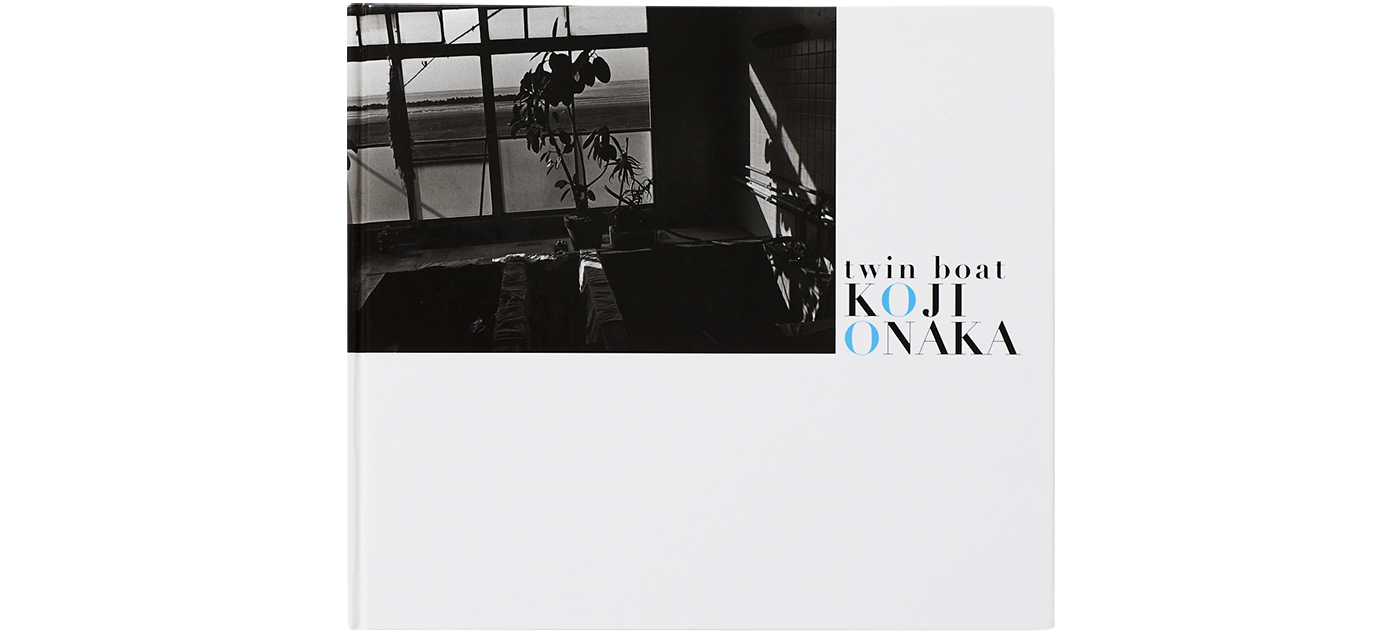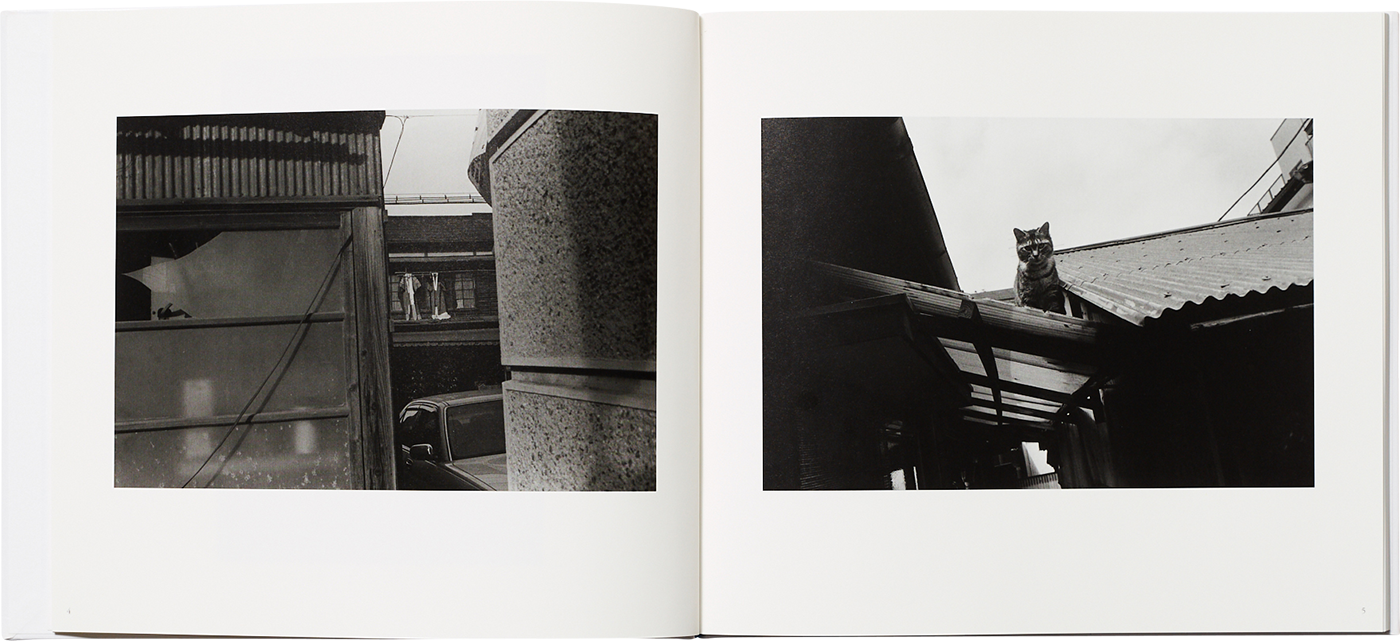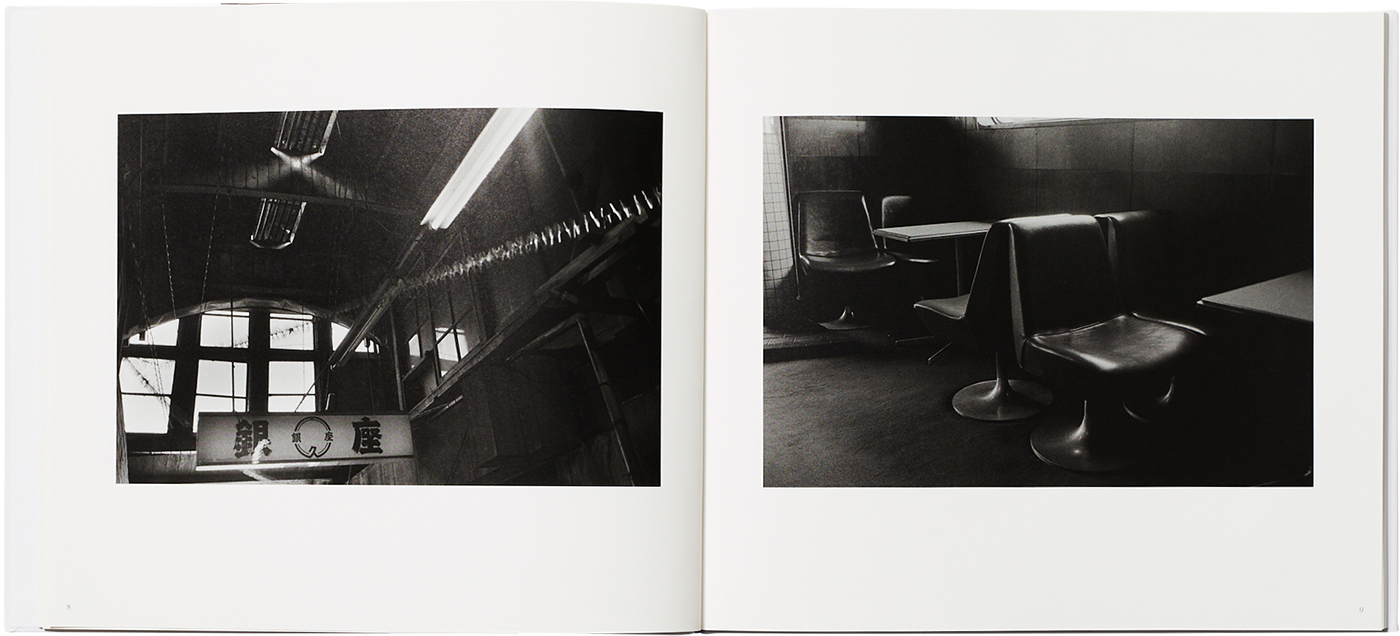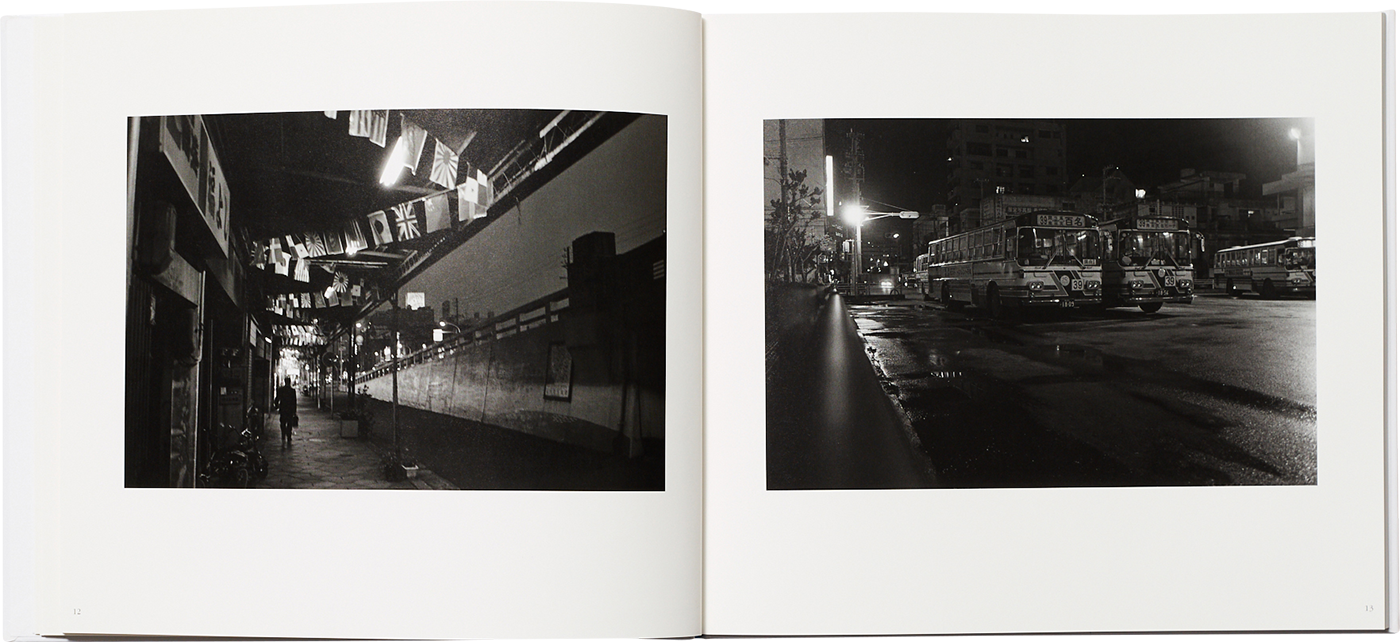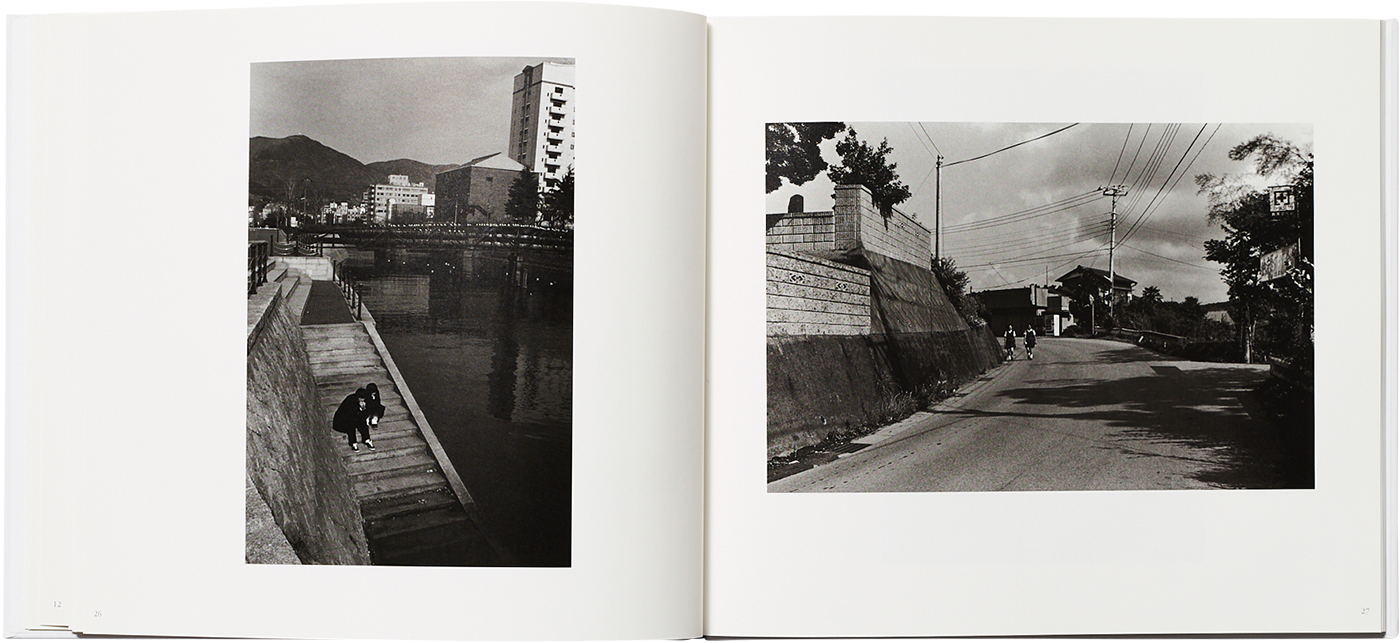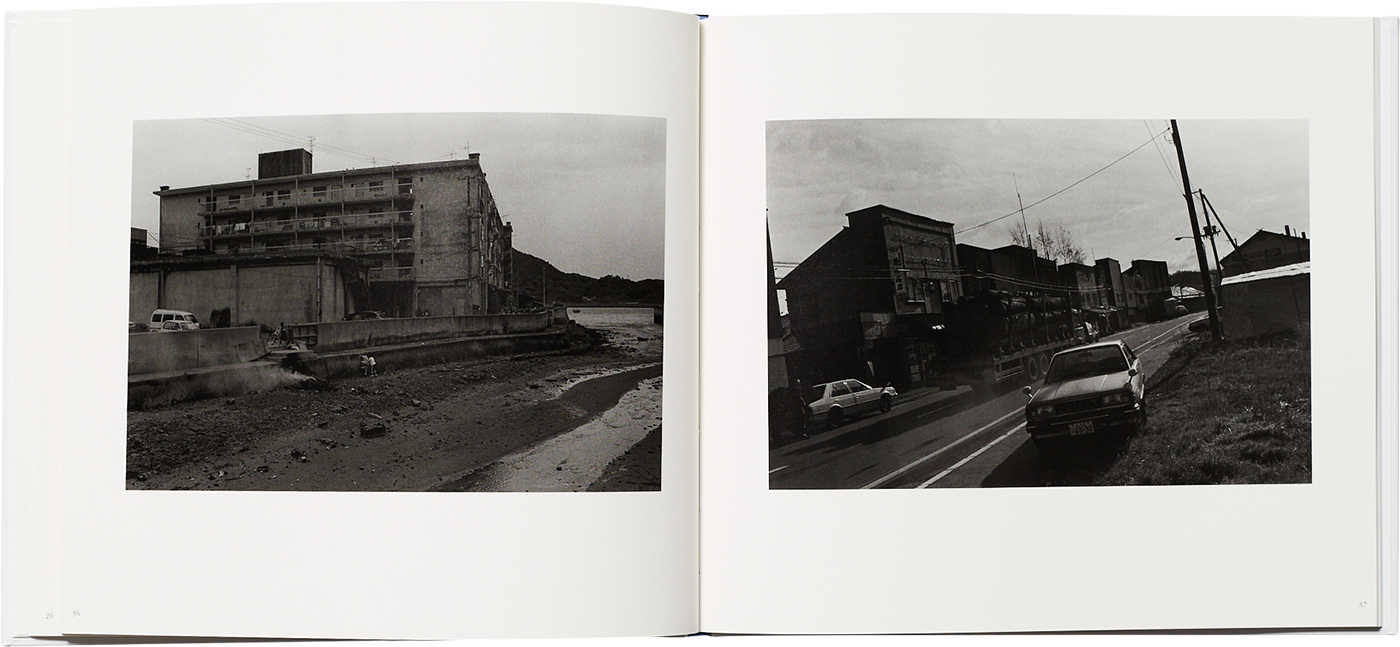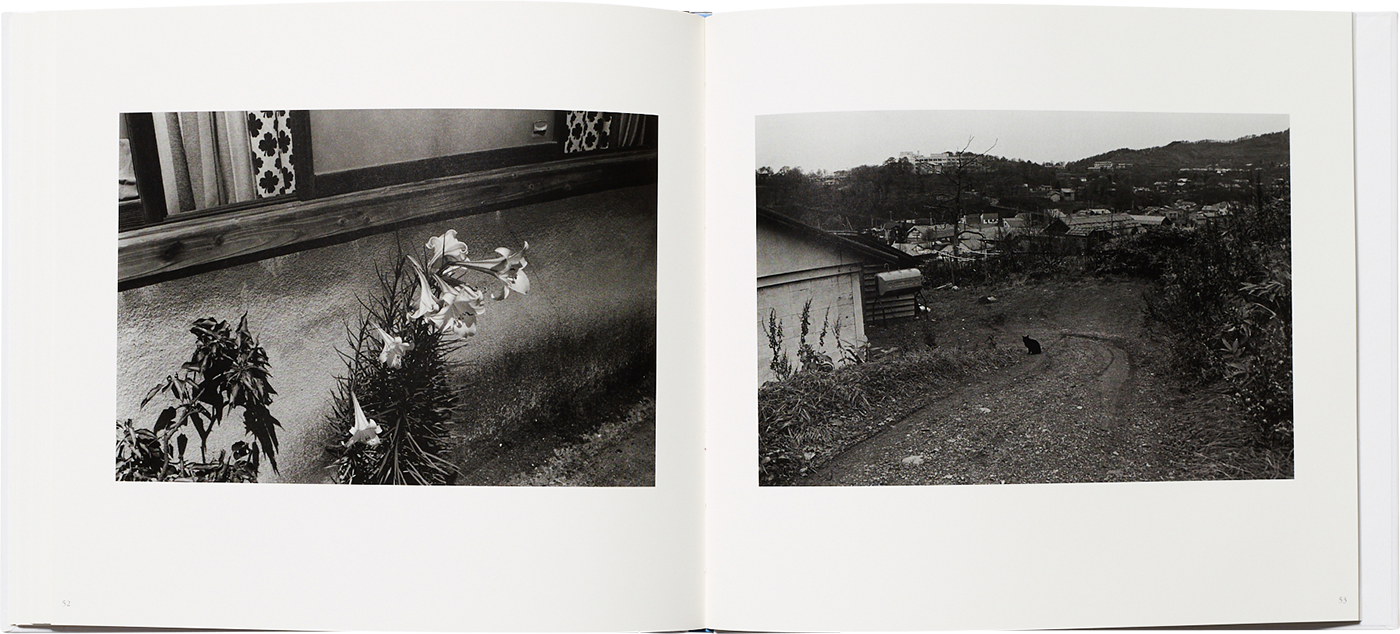—Photography: Koji Onaka
—Design: Mika Murai
—Translation: Daniel Gonzalez
—10.4" x 9.1"
—Hardcover
—68 pages
—Edition of 700
—2013
—OUT OF PRINT
Session Press is pleased to announce “twin boat,” the first US official monograph by Koji Onaka. Ten years after Onaka released “slow boat,” a book that has since made him internationally recognized, a new legend begins with a fresh perspective. Onaka recounts in this new installment,
"Nearly all of the photos contained in “twin boat” were produced in the same period as those in “slow boat”. In this sense, the two volumes could be considered fraternal twins. Whereas slow boat is akin to an older brother, “twin boat” is its little sister, at last welcomed into the world a decade late."
Koji Onaka joined Image Shop CAMP, an independent photography gallery managed by Daido Moriyama. Onaka was awarded The 4th Shashin-no-kai prize in 1992, the 18th Higashikawa New Photographer prize in 2002 and The Photographic Society of Japan New Photographer prize in 2006.
Over the past 30 years, Onaka has traveled extensively and exhibited in numerous solo and group exhibitions in Japan and abroad: Zeit Foto Salon, Zen Foto Gallery, Emon Photo Gallery, Nadar, Visual Arts gallery, Photo 4, Le PLAC'ART PHOTO Paris, Gallery Kaido, Chukyo University C・Square, Tokyo Metropolitan Museum of Photography, Shanghai Museum, Yokohama Citizens Gallery, Nogata Tanio Museum, and The Japan Foundation.
セッションプレス第4弾は、多くの国際的なアートフェアに参加し活躍する東京在住の作家、尾仲浩二の『twin boat』です。2003年に出版された名作『slow boat』(2008年ドイツにて再版。現在絶版)と同時期に制作された白黒作品から構成され、 700部限定で出版しました。
Artist Statement
In 2003, “slow boat” cast off from a riverbank and slowly made its way downstream. It soon reached the open sea, drifted across multiple oceans, and finally arrived in New York in 2006 by way of the German publishing house schaden.com.
Nearly all of the photos contained in twin boat were produced in the same period as those in slow boat. In this sense, the two volumes could be considered fraternal twins. Whereas “slow boat” (edited by myself and Michitaka Oda of Tokyo’s Sokyu-sha) is akin to an older brother, “twin boat” (edited by Miwa Susuda) is its little sister, at last welcomed into the world a decade late.
Ten years ago, I wrote in the afterword to “slow boat” that the publication might be my last collection of monochrome photographs. Since then, photography has changed dramatically. Color negative film and printing paper have been replaced with the advent of digital photography, and are on the verge of being extinguished like candles flickering precariously in the wind. At present, I still have yet to consider working with a digital camera, and might resume shooting in black and white.
However, there is no undertaking as tedious as darkroom work. Preparation and cleanup take time. The increased cost of now expensive printing paper makes it uneconomical to use many sheets until the best result is attained. What’s more, prints never seem to turn out how I originally envisioned. But these tribulations are good. The time spent worrying about various details inside the darkroom is perhaps the most enjoyable and even luxurious aspect of the artistic process. I can’t imagine it any other way.
I entrusted Ms. Susuda with the entire task of editing twin boat. While I was a bit surprised by the narrative of adolescent first love that she constructed from the photographs I provided, any initial trepidation soon gave way to elation. Her unique editorial sense achieves a storyline I could not have produced on my own. I am delighted that work created long ago in my twenties and thirties in small towns in Japan has thus captured her imagination and now resonates with her contemporary existence in New York.
I earnestly hope that the publication of “twin boat” helps to free photography from its predestined fetters of time and place. Photographs can be born anew irrespective of any specific time or geographic locale through the individual sensitivity and interpretation of each beholder. And that means photography can possess a life of its own independent from the photographer’s original intent.
I am grateful to Ms. Susuda for providing a new vessel by which to share my work. Now that it’s time to set sail, I wonder where twin boat will head once it leaves harbor. There’s no rush to arrive at our destination – let’s savor the voyage.
Koji Onaka
(Translation: Daniel Gonzalez)
Koji Onaka
(Fukuoka, 1960)
Koji Onaka was born in Fukuoka, Japan in 1960 and graduated from the Tokyo Visual Arts in 1982. Upon his graduation, Onaka briefly worked as an assistant for a fashion photographer and joined CAMP, Daido Moriyama’s Workshop from 1983 to 1984. Over the past 30 years, Onaka has traveled extensively throughout Japan and exhibited in numerous solo and group exhibitions in Japan and abroad: Zen Photo Gallery, Gallery Kaido, Emon Photo Gallery, Photo4, Le PLAC’ART PHOTO Paris, Tanio Museum, Nadar, Chukyo University gallery C・Square, Shanghai Museum, Tokyo Metropolitan Museum of Photography, Visual Arts gallery, Yokohama citizens gallery, ZEIT FOTO SALON, The Japan Foundation.
Onaka has produced numerous publications including, “Umimachi 1983,” “Nogata: Echoes of Coal and Steel,” “The Dog in France,” “DRAGONFLY,” “GRASSHOPPER,” “in-between Latvia, Spain,” “slow boat,” “hysteric Five : Onaka Koji,” “Tokyo Candy Box,” “DISTANCE,” “Seitaka Awadachi-Sou” so on.
尾仲 浩二
(1960年・福岡県直方市生まれ)
1980年代後半より、自主ギャラリーでの連続個展や、旺盛な写真集の出版活動を通じて、作品を発表している。写真家北島敬三に写真のモダニズムへの反抗と評される。これまで、1982年 に、東京写真専門学校(現・東京ビジュアルアーツ)卒業後、イメージショップ「CAMP」に参加し、1988年4月1日 - 自主ギャラリー「街道」を西新宿にオープンする。1992年 - 写真集『背高あわだち草』で写真の会賞を受賞、2002年 - 東川賞新人作家賞を受賞、2006年 - 日本写真協会賞新人賞を受賞する。
